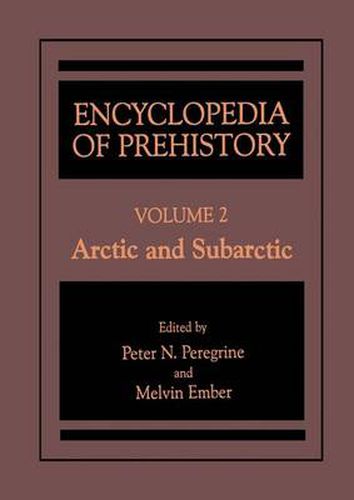Readings Newsletter
Become a Readings Member to make your shopping experience even easier.
Sign in or sign up for free!
You’re not far away from qualifying for FREE standard shipping within Australia
You’ve qualified for FREE standard shipping within Australia
The cart is loading…






This title is printed to order. This book may have been self-published. If so, we cannot guarantee the quality of the content. In the main most books will have gone through the editing process however some may not. We therefore suggest that you be aware of this before ordering this book. If in doubt check either the author or publisher’s details as we are unable to accept any returns unless they are faulty. Please contact us if you have any questions.
The Encyclopedia of Prehistory represents also defined by a somewhat different set of an attempt to provide basic information sociocultural characteristics than are eth on all archaeologically known cultures, nological cultures. Major traditions are covering the entire globe and the entire defined based on common subsistence prehistory of humankind. It is designed as practices, sociopolitical organization, and a tool to assist in doing comparative material industries, but language, ideology, research on the peoples of the past. Most and kinship ties play little or no part in of the entries are written by the world’s their definition because they are virtually foremost experts on the particular areas unrecoverable from archaeological con and time periods. texts. In contrast, language, ideology, and The Encyclopedia is organized accord kinship ties are central to defining ethno ing to major traditions. A major tradition logical cultures. There are three types of entries in the is defined as a group of populations sharing Encyclopedia: the major tradition entry, similar subsistence practices, technology, and forms of sociopolitical organization, the regional subtradition entry, and the which are spatially contiguous over a rela site entry. Each contains different types of tively large area and which endure tempo information, and each is intended to be rally for a relatively long period. Minimal used in a different way.
$9.00 standard shipping within Australia
FREE standard shipping within Australia for orders over $100.00
Express & International shipping calculated at checkout
This title is printed to order. This book may have been self-published. If so, we cannot guarantee the quality of the content. In the main most books will have gone through the editing process however some may not. We therefore suggest that you be aware of this before ordering this book. If in doubt check either the author or publisher’s details as we are unable to accept any returns unless they are faulty. Please contact us if you have any questions.
The Encyclopedia of Prehistory represents also defined by a somewhat different set of an attempt to provide basic information sociocultural characteristics than are eth on all archaeologically known cultures, nological cultures. Major traditions are covering the entire globe and the entire defined based on common subsistence prehistory of humankind. It is designed as practices, sociopolitical organization, and a tool to assist in doing comparative material industries, but language, ideology, research on the peoples of the past. Most and kinship ties play little or no part in of the entries are written by the world’s their definition because they are virtually foremost experts on the particular areas unrecoverable from archaeological con and time periods. texts. In contrast, language, ideology, and The Encyclopedia is organized accord kinship ties are central to defining ethno ing to major traditions. A major tradition logical cultures. There are three types of entries in the is defined as a group of populations sharing Encyclopedia: the major tradition entry, similar subsistence practices, technology, and forms of sociopolitical organization, the regional subtradition entry, and the which are spatially contiguous over a rela site entry. Each contains different types of tively large area and which endure tempo information, and each is intended to be rally for a relatively long period. Minimal used in a different way.